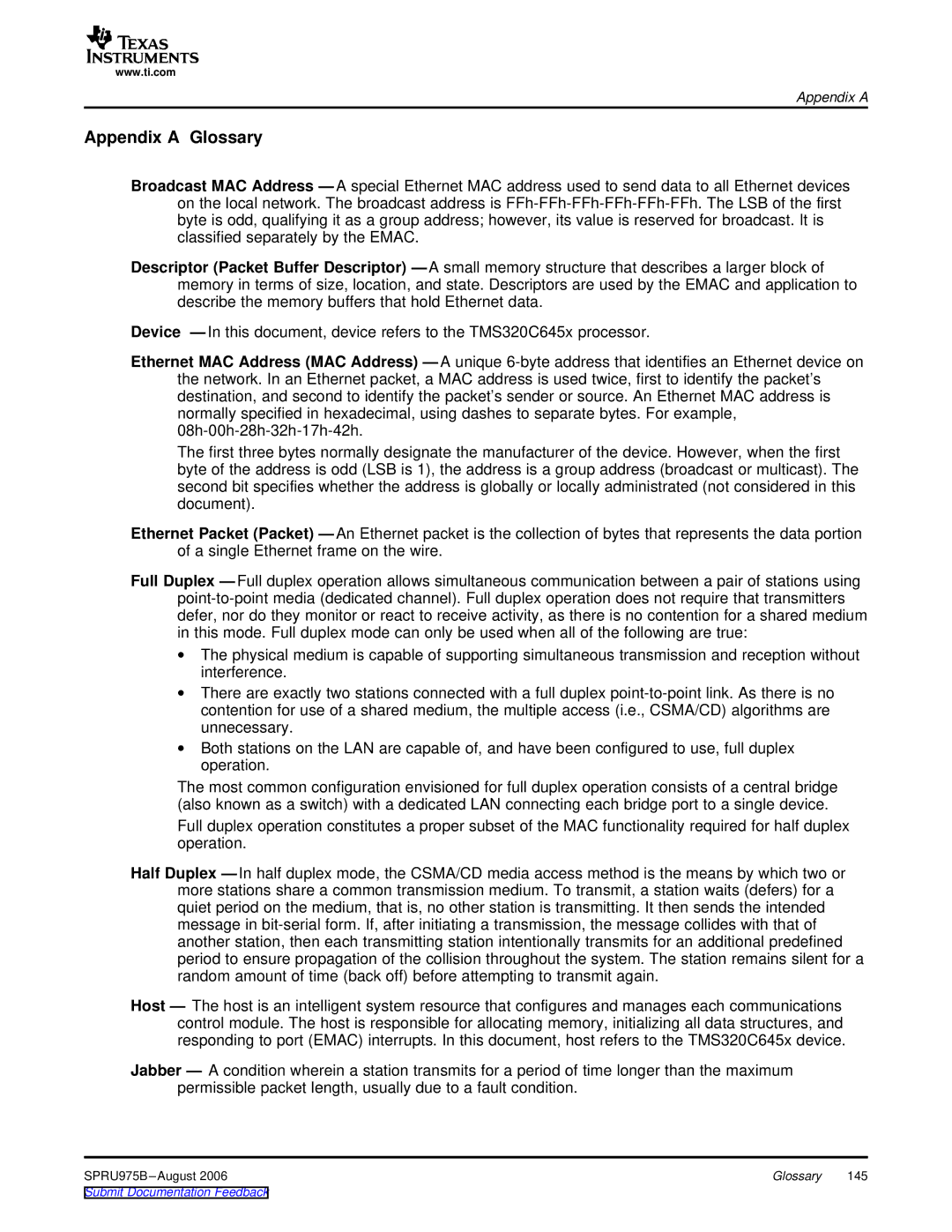
www.ti.com
Appendix A
Appendix A Glossary
Broadcast MAC Address — A special Ethernet MAC address used to send data to all Ethernet devices on the local network. The broadcast address is
Descriptor (Packet Buffer Descriptor) — A small memory structure that describes a larger block of memory in terms of size, location, and state. Descriptors are used by the EMAC and application to describe the memory buffers that hold Ethernet data.
Device — In this document, device refers to the TMS320C645x processor.
Ethernet MAC Address (MAC Address) — A unique
The first three bytes normally designate the manufacturer of the device. However, when the first byte of the address is odd (LSB is 1), the address is a group address (broadcast or multicast). The second bit specifies whether the address is globally or locally administrated (not considered in this document).
Ethernet Packet (Packet) — An Ethernet packet is the collection of bytes that represents the data portion of a single Ethernet frame on the wire.
Full Duplex — Full duplex operation allows simultaneous communication between a pair of stations using
∙The physical medium is capable of supporting simultaneous transmission and reception without interference.
∙There are exactly two stations connected with a full duplex
∙Both stations on the LAN are capable of, and have been configured to use, full duplex operation.
The most common configuration envisioned for full duplex operation consists of a central bridge (also known as a switch) with a dedicated LAN connecting each bridge port to a single device.
Full duplex operation constitutes a proper subset of the MAC functionality required for half duplex operation.
Half Duplex — In half duplex mode, the CSMA/CD media access method is the means by which two or more stations share a common transmission medium. To transmit, a station waits (defers) for a quiet period on the medium, that is, no other station is transmitting. It then sends the intended message in
Host — The host is an intelligent system resource that configures and manages each communications control module. The host is responsible for allocating memory, initializing all data structures, and responding to port (EMAC) interrupts. In this document, host refers to the TMS320C645x device.
Jabber — A condition wherein a station transmits for a period of time longer than the maximum permissible packet length, usually due to a fault condition.
SPRU975B | Glossary | 145 |
